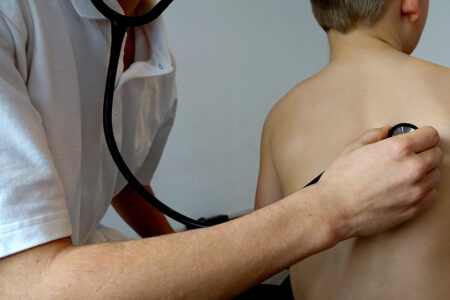Women are notorious caregivers, a role that is inherently good. They are often the ones who manage the health of the whole family – significant others, children, parents, and family pets – all while juggling careers, volunteer opportunities, birthday parties, and household duties. While it’s no surprise, it is unfortunate that when a woman’s life gets busy, her own health and well-being are often the first things to be sacrificed. Combine this with the fact that women are receiving mixed messages about how often they need to visit the OB-GYN. The result? Many women are missing out on an integral part of good care – prevention.
While recent Pap test guidelines have changed, it is still important for women to have a well-woman exam yearly. The age at which to start annual well-woman exams varies depending on the individual’s health and maturity. Generally, we recommend that a young woman have her first gynecologic visit in her early teen years.
An annual exam is more than just a Pap test. For a woman’s first annual exam, the visit may just include counseling and the opportunity to begin a trusting relationship with a women’s health care provider. As a woman matures, her annual exam will include a complete review of her medical history, a pelvic exam, a breast exam, and health counseling. Additionally, it may include lab tests or a Pap test.
A Pap test, commonly referred to as a Pap smear, is a simple screening that helps detect abnormal cells on a woman’s cervix. A Pap test allows for early diagnosis and treatment so that the abnormal cells do not become cancerous. While for many women, they are no longer required every year, they still play a vital role in a complete health program.
In March 2012, the US Preventative Services Task Force released new guidelines about the age at which to begin having Pap tests and the frequency of these screenings.While the frequency has been reduced for Many women, it is important to note that for women who have a history of abnormal Pap tests, the revised guidelines will most likely not apply. It is best to determine an individualized treatment plan by speaking with your health care provider.
• Beginning at age twenty-one, a woman should have a Pap test every three years until age thirty.
• Women aged thirty and older, who have determined with their health care providers that Pap tests are not needed every year, can have a Pap test in conjunction with human papillomavirus (HPV) testing every five years.
Routine doctors’ appointments can help discover the signs of illness when they are most treatable and less costly to treat. They can also help keep women up to date with age-appropriate screenings, such as mammograms, colonoscopies, and bone density scans.
Remember that health is not merely the absence of disease; it’s a lifestyle. Whether it’s getting enough sleep, exercising regularly and eating nutritiously, or making it a priority to keep up with preventative screenings and appointments, it’s important to make time for yourself. Women should also take care to pay attention to our health and bodies, trusting our instincts and alerting health care providers if things no longer seem normal. Choosing to adopt healthy lifestyle behaviors by tending to annual exams is a step in the right direction.








